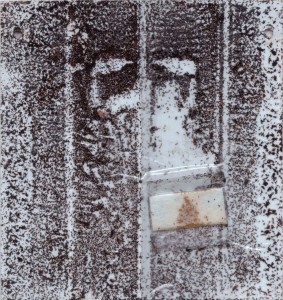Discovery of a new potent kairomone for New Zealand flower thrips
New Zealand flower thrips, Thrips obscuratus (Thysanoptera:  thrips-new lureThripidae), are attracted to ripening fruits, especially peaches. Volatiles from unripe and ripe peach fruits were collected and analyzed by gas chromatography/mass spectrometry. Six lactones were found only in ripe peach volatiles: γ-heptalactone, γ-octalactone, γ-nonalactone, 6-pentyl-2H-pyran-2-one, γ-decalactone, and δ-decalactone. When these compounds were tested individually in field-trapping experiments, three of them (γ-octalactone, γ-nonalactone, and 6-pentyl-2H-pyran-2-one) attracted New Zealand flower thrips. In another field-trapping experiment, aimed at testing various combinations of the three active compounds, no synergistic effects were found among all combinations tested; no combination caught more thrips than 6-pentyl-2H-pyran-2-one, alone. A further field-trapping experiment was conducted to determine the dose (10, 100, and 500 mg) of 6-pentyl-2H-pyran-2-one that gave the greatest catch of T. obscuratus, while also comparing it against another attractant, ethyl nicotinate. The greatest catches in traps baited with either attractant were at loadings of 500 mg. At both 10 and 500 mg, traps baited with 6-pentyl-2H-pyran-2-one caught more T. obscuratus than those baited with the same amounts of ethyl nicotinate. 6-Pentyl-2H-pyran-2-one is a potent attractant for New Zealand flower thrips and, therefore, could be used for monitoring and control of this pest.
thrips-new lureThripidae), are attracted to ripening fruits, especially peaches. Volatiles from unripe and ripe peach fruits were collected and analyzed by gas chromatography/mass spectrometry. Six lactones were found only in ripe peach volatiles: γ-heptalactone, γ-octalactone, γ-nonalactone, 6-pentyl-2H-pyran-2-one, γ-decalactone, and δ-decalactone. When these compounds were tested individually in field-trapping experiments, three of them (γ-octalactone, γ-nonalactone, and 6-pentyl-2H-pyran-2-one) attracted New Zealand flower thrips. In another field-trapping experiment, aimed at testing various combinations of the three active compounds, no synergistic effects were found among all combinations tested; no combination caught more thrips than 6-pentyl-2H-pyran-2-one, alone. A further field-trapping experiment was conducted to determine the dose (10, 100, and 500 mg) of 6-pentyl-2H-pyran-2-one that gave the greatest catch of T. obscuratus, while also comparing it against another attractant, ethyl nicotinate. The greatest catches in traps baited with either attractant were at loadings of 500 mg. At both 10 and 500 mg, traps baited with 6-pentyl-2H-pyran-2-one caught more T. obscuratus than those baited with the same amounts of ethyl nicotinate. 6-Pentyl-2H-pyran-2-one is a potent attractant for New Zealand flower thrips and, therefore, could be used for monitoring and control of this pest.
Development of an efficient trapping system for New Zealand flower thrips
Two chemical attractants (ethyl nicotinate and 6-pentyl-2H-pyran-2-one), three dispensers, three trap designs and four trap heights were investigated to determine the most effective method for monitoring New Zealand flower thrips (NZFT). Phenology of NZFT at two locations was compared. 6-Pentyl-2H-pyran-2-one in a polyethylene bag dispenser was the most attractive lure formulation and exhibited high stability in release rate trials. There was no difference in NZFT catch between vertical-panel and cross-panel traps, but both caught significantly more than delta traps. However, both types of panel trap had unacceptably high by-catch of native insects. Catch of thrips increased with height from 0 to 3 m. Phenology of NZFT showed similar population trends at both locations, but with a timing difference of around 50 days. Delta traps containing 6-pentyl-2H-pyran-2-one in a polyethylene bag at 2 m above the ground is the recommended method for monitoring NZFT, significantly improving the sensitivity, accuracy and labour input compared with prior methods. Long-term monitoring of NZFT could lead to more accurate economic damage thresholds and timing of insecticide applications.


